AMD Threadripper 1920X and 1950X CPU Details: 12/16 Cores, 4 GHz Turbo, $799 and $999
by Ian Cutress on July 13, 2017 9:00 AM EST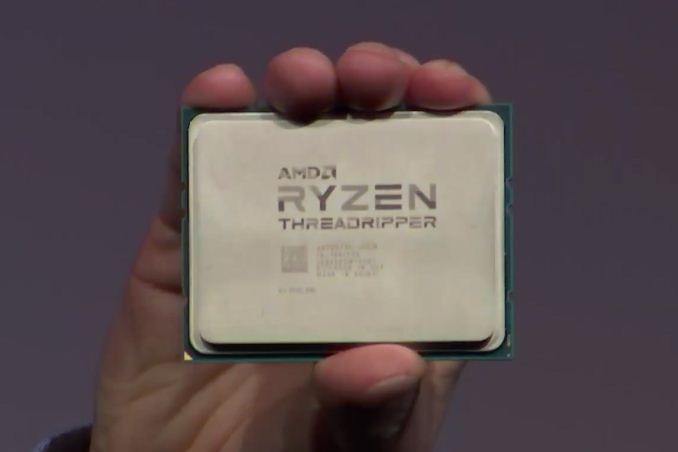
Last night out of the blue, we received an email from AMD, sharing some of the specifications for the forthcoming Ryzen Threadripper CPUs to be announced today. Up until this point, we knew a few things – Threadripper would consist of two Zeppelin dies featuring AMD’s latest Zen core and microarchitecture, and would essentially double up on the HEDT Ryzen launch. Double dies means double pretty much everything: Threadripper would support up to 16 cores, up to 32 MB of L3 cache, quad-channel memory support, and would require a new socket/motherboard platform called X399, sporting a massive socket with 4094-pins (and also marking an LGA socket for AMD). By virtue of being sixteen cores, AMD is seemingly carving a new consumer category above HEDT/High-End Desktop, which we’ve coined the ‘Super High-End Desktop’, or SHED for short.
Today’s announcements, accompanied by a video from the CEO of AMD Dr. Lisa Su, shed some light on the new SHED processors: namely clock speeds and pricing, and a reaffirmed commitment to launching the new CPUs in August.
| AMD Ryzen CPUs | |||||
| Threadripper 1950X |
Threadripper 1920X |
Ryzen 7 1800X |
|||
| Socket | TR4 (LGA) 4094-pin |
AM4 (PGA) 1331-pin |
|||
| Cores/Threads | 16 / 32 | 12 / 24 | 8 / 16 | ||
| Base Frequency | 3.4 GHz | 3.5 GHz | 3.6 GHz | ||
| Turbo Frequency | 4.0 GHz | 4.0 GHz | 4.0 GHz | ||
| XFR | ? (+100?) | ? (+100?) | +100 MHz | ||
| L3 Cache | 32 MB | 32 MB ? | 16 MB | ||
| TDP | 180W* | 180W* | 95 W | ||
| PCIe 3.0 Lanes | 60 + 4 | 60 + 4 | 16 + 4 + 4 | ||
| DRAM Frequency | 1DPC | ? | ? | DDR4-2666 | |
| 2DPC | ? | ? | DDR4-2400 | ||
| Chipset Support | X399 | X399 | X370 B350 A320 |
||
| Price (List) | $999 | $799 | $499 | ||
| Price (Retail) | TBD | TBD | $419 | ||
As you can see from the table, there are lots of question marks. We fired off a series of questions to AMD to fill in the blanks, so we can understand this product a bit better, but we were told to wait until closer to launch day. The only answer we could get was the styling on the naming. These are ‘Threadripper’ processors (rather than ThreadRipper), and are part of the Ryzen family, and the official SKU names are ‘Ryzen Threadripper 1950X’ and ‘Ryzen Threadripper 1920X’. We are likely to shorten these to ‘TR 1950X’ and ‘TR 1920X’ for expediency.
*180W was confirmed after this article was originally posted.
The AMD Ryzen Threadripper 1950X
From what we do know, 16 Zen cores at $999 is about the ballpark price we were expecting. With the clock speeds of 3.4 GHz base and 4 GHz Turbo, this is essentially two Ryzen 7 1800X dies at $499 each stuck together, creating the $999 price (obviously it’s more complicated than this). Given the frequencies and the performance of these dies, the TDP is likely in the 180W range; seeing as how the Ryzen 7 1800X was a 95W CPU with slightly higher frequencies. The 1950X runs at 4.0 GHz turbo and also has access to AMD’s XFR – which will boost the processor when temperature and power allows – in jumps of +25 MHz: AMD would not comment on the maximum frequency boost of XFR, though given our experiences of the Ryzen silicon and previous Ryzen processor specifications, this is likely to be +100 MHz. We were not told if the CPUs would come with a bundled CPU cooler, although if our 180W prediction is in the right area, then substantial cooling would be needed. We expect AMD to use the same Indium-Tin solder as the Ryzen CPUs, although we were unable to get confirmation at this at this time.
| Comparison: Threadripper 1950X vs Core i9-7980XE / Gold 6150 | |||
| AMD Threadripper 1950X |
Features | Intel Core i9-7980XE |
Intel Xeon Gold 6150 |
| 16 / 32 | Cores/Threads | 18 / 36 | 18 / 36 |
| 3.4 / 4.0 GHz | Base/Turbo | ? | 2.7 / 3.7 GHz |
| 60 | PCIe 3.0 Lanes | 44 | 44 |
| 512 KB/core | L2 Cache | 1 MB/core | 1 MB/core |
| 32 MB | L3 Cache | 24.75 MB | 24.75 MB |
| 180W* | TDP | ? (165W?) | 165W |
| $999 | Price (List) | $1999 | $3358 |
Intel has already announced that they will be launching the 18-core Intel Core i9-7980XE processor later this year for $1999, although final specifications have yet to be announced. Given the launch this week of Intel’s Skylake-SP Xeon processors, there is one CPU in that line-up that would fit the bill for an i9-7980XE candidate: the Xeon Gold 6150, running at a 2.7 GHz Base and 3.7 GHz Turbo at 165W, but this part has a list price of $3358. If the Gold 6150 becomes with Core i9-7980XE, then the new SHED category of CPUs will be an exciting one to watch.
Comparing the two, and what we know, AMD is going to battle on many fronts. Coming in at $999 is going to be aggressive, along with an all-core turbo at 3.4 GHz or above: Intel’s chip at $1999 will likely turbo below this. Both chips will have quad-channel DRAM, supporting DDR4-2666 in 1 DIMM per channel mode (and DDR4-2400 in 2 DPC), but there are some tradeoffs. Intel Core parts do not support ECC, and AMD Threadripper parts are expected to (awaiting confirmation). Intel has the better microarchitecture in terms of pure IPC, though it will be interesting to see the real-world difference if AMD is clocked higher. AMD Threadripper processors will have access to 60 lanes of PCIe for accelerators, such as GPUs, RAID cards and other functions, with another 4 reserved by the chipset: Intel will likely be limited to 44 for accelerators but have a much better chipset in the X299 for IO support and capabilities. We suspect AMD to run a 180W TDP, and Intel at 165W, giving a slight advantage to Intel perhaps (depending on workload), and Intel will also offer AVX512 support for its CPU whereas AMD has smaller FMA and AVX engines by comparison. The die-to-die latency of AMD’s MCM will also be an interesting element to the story, depending exactly where AMD is aiming this product.
Meanwhile we have seen some of the X399 early-version motherboards back at Computex last month. With 60 PCIe lanes on each Threadripper CPU for accelerators, we are likely to see 32 or 48 used for PCIe slots (in x16/x16, x8/x8/x8/x8, x16/x16/x8/x8 or similar configurations) with up to three PCIe 3.0 x4 storage options. On the ASRock board above, there are two PCIe 3.0 x4 M.2 slots as well as a PCIe 3.0 x4 based U.2 connector for drives like Intel's SSD 750. Because these are aiming for the SHED market, features such as 10 Gigabit Ethernet ports from Aquantia are likely to feature on a number of boards as well.
The AMD Ryzen Threadripper 1920X
The 12-core Threadripper 1920X is likely positioned directly against Intel’s 10-core Core i9-7900X or Core i7-7820X, which are both available today.
| Comparison: Threadripper 1920X vs Core i7-7820X / i9-7900X | |||
| AMD Threadripper 1920X |
Features | Intel Core i7-7820X |
Intel Core i9-7900X |
| 12 / 24 | Cores/Threads | 8 / 16 | 10 / 20 |
| 3.5 / 4.0 GHz | Base/Turbo | 3.6 / 4.5 GHz | 3.3 / 4.5 GHz |
| 60 | PCIe 3.0 Lanes | 28 | 44 |
| 512 KB/core | L2 Cache | 1 MB/core | 1 MB/core |
| 32 MB ? | L3 Cache | 8.25 MB | 11 MB |
| 180W* | TDP | 140W | 140W |
| $799 | Price (List) | $599 | $999 |
The 12-core part should use 3 cores per CCX if trends of Ryzen CPUs are followed, and should have access to all 64 MB of L3 cache (we are waiting for this to be confirmed). At $799, it falls half-way between the 7900X at $999 and the 7820X at $599, but beats them both in pure core count. The 1920X has all the 60+4 PCIe lanes that the 1950X does, while Intel’s chips have 44 and 28 respectively. Again, Intel does have access to AVX512, but only the 7900X has dual 512-bit FMA engines while the 7820X has one (and the 1920X has 128-bit FMAs). The 1920X will also take the new socket.
In a series of tests AMD performed, to accompany the launch, they ran Cinebench R15 and got the following scores:
| AMD's Cinebench Results | ||||
| Cores/ Threads |
Base/ Turbo |
List | CB15 Score |
|
| AMD Threadripper 1950X | 16C/32T | 3.4/4.0 | $999 | 3062 |
| AMD Threadripper 1920X | 12C/24T | 3.5/4.0 | $799 | 2431 |
| Intel Core i9-7900X | 10C/20T | 3.3/4.3 | $999 | 2167 |
Test Setups from AMD can be found here.
AMD is set to provide some interesting competition in the HEDT and SHED spaces, and we fully suspect AMD to go after the more traditional floating point crowd for these new processors. We will probably see some talk about gaming performance as well, just because of the draw of the news. We’ve still got a number of questions for AMD:
- Will the ThreadRipper family have more than two parts in the future?
- Do both 16-core and 12-core parts have access to all 32MB of L3 cache?
- Can you reconfirm the 12-core part is using 3 cores per CCX?
- Is the Infinity Fabric bandwidth between the two dies the same as in EPYC (42 GB/s bidirectional)?
- This corresponds to an Infinity Fabric data rate of 10.4 GT/s? Or is it declocked to 9.6 GT/s or 8.0 GT/s?
- What is the official memory support for the TR CPUs? DDR4-2666?
Is that at 2 DIMMs per channel or 1 DIMM per channel? - What are the TDP numbers for both TR processors? (Edit: AMD's System Setups confirm 180W)
- Do they come with any pre-bundled coolers? If not, what coolers will AMD recommend?
- Are those prices 1k unit prices or MSRPs? If the former, what are the MSRPs?
- Can you confirm if XFR for these CPUs is +100 MHz?
- What are the largest DDR4 memory modules that TR supports? (e.g. 16GB UDIMM or up to 32/64/128GB RDIMM/LRDIMM?)
- Did AMD give the motherboard manufacturers any ball-park figures for motherboard pricing to aim for? At what pricing should we expect the entry/mid-range motherboards to appear at?
- What markets are AMD targeting with the ThreadRipper launch?
- Will both CPUs be available worldwide on the same day, or will there be a staggered regional launch?
- Can you confirm that ThreadRipper is using an Indium-Tin solder between the die and the heatspreader?
- For the 64 PCIe lanes (60+4), are there any limitations on any of the PCIe root complexes?
- If 3.4G/3.5G are the base frequencies, what are the all-core turbo frequencies?
- How many cores will TR sustain for the top turbo frequency? (e.g. 2 cores at 4 GHz, or 4 cores at 4 GHz?)
Some of our readers might argue that some of these answers have been exposed in leaks – from our perspective, getting confirmation from AMD (even on the minor points) is critical here. We’re going to have to wait until nearer the launch to get the answers to these questions. AMD have reaffirmed they are aiming for an early August launch, with more info at SIGGRAPH in a couple of weeks.
Dell's Area 51 Threadripper
A side note: Dell's Area 51 Threadripper desktop will be available for pre-order on July 27th – it would appear that Dell has an OEM launch day exclusive at this time, so we might see some more details then. The Area 51 will ship after the 27th; that is just the pre-order date.
| Alienware Area-51 Threadripper Edition | |||||
| Processor | AMD Ryzen Threadripper (Up to 16C/32T) | ||||
| Memory | Up To 64 GB 2933 MHz DDR4 (4x DIMM) | ||||
| Graphics | Up to 2 x Nvidia GeForce GTX 1080 Ti in SLI or Up to 3 x AMD Radeon RX 580 in Crossfire |
||||
| Storage | HDD: Up to 2TB SSD (M.2 PCIe): Up to 1TB |
||||
| Wireless | Dell 1820 802.11ac 2x2 or Killer 1535 802.11ac 2x2 Wi-Fi |
||||
| Front | 2x USB 3.1 Gen 1 Type-A Optical Drive Headphone Jack Microphone Jack Media Card Reader |
||||
| Rear | 10 USB ports (unspecified form-factors) Includes 1 USB Type-C (w/ 15W Powershare) Dual Killer Networks E2500 Gigabit NICs SPDIF Port 5 1/8" Audio Jacks |
||||
| Dimensions | 569 x 638 x 272 mm | ||||
| Weight | Starting at 28kg | ||||
| Pricing | TBA | ||||
There’s Some Ryzen 3 Too
Alongside the Threadripper news, AMD gave some small hints about Ryzen 3 as well. Ryzen 3 is the quad-core versions of Ryzen using the same silicon as Ryzen 5 and Ryzen 7, but with cores disabled and selling at lower price points. We got a sneaky peak at some of the Ryzen 3 specifications when a different AMD department announced the equivalent Ryzen 3 PRO processors, but AMD gave us the following to chew on:
| AMD Ryzen SKUs | |||||||
| Cores/ Threads |
Base/ Turbo |
XFR | L3 | TDP | Cost | Cooler | |
| Ryzen 7 1800X | 8/16 | 3.6/4.0 | +100 | 16 MB | 95 W | $499 | - |
| Ryzen 7 1700X | 8/16 | 3.4/3.8 | +100 | 16 MB | 95 W | $399 | - |
| Ryzen 7 1700 | 8/16 | 3.0/3.7 | +50 | 16 MB | 65 W | $329 | Spire RGB |
| Ryzen 5 1600X | 6/12 | 3.6/4.0 | +100 | 16 MB | 95 W | $249 | - |
| Ryzen 5 1600 | 6/12 | 3.2/3.6 | +100 | 16 MB | 65 W | $219 | Spire |
| Ryzen 5 1500X | 4/8 | 3.5/3.7 | +200 | 16 MB | 65 W | $189 | Spire |
| Ryzen 5 1400 | 4/8 | 3.2/3.4 | +50 | 8 MB | 65 W | $169 | Stealth |
| Ryzen 3 1300X | 4/4 | 3.5/3.7 | ? | 8 MB ? | ? | ? | ? |
| Ryzen 3 1200 | 4/4 | 3.1/3.4 | ? | 8 MB | ? | ? | ? |
When we got our information from AMD, prices were still being decided, but the official launch day will be July 27th. One only one of the CPUs uses the full XFR, and AMD didn’t provide TDP numbers but we suspect they will be listed as 65W parts. AMD did not comment if these CPUs would have coolers bundled with them or not. Again, we’ll have to wait until closer to launch day/on launch day for this information.
For users keen on Bristol Ridge information, I am still poking AMD. I’m still being told that it will be launched into the retail channel for consumers, but not at this time.
Threadripper 2
The future....
Perhaps not - just a clever photoshop. Source: Reddit
Related Reading
- The AMD Zen and Ryzen 7 Review: A Deep Dive on 1800X, 1700X and 1700
- The AMD Ryzen 5 1600X vs Core i5 Review: Twelve Threads vs Four at $250
- AMD Inadvertently Reveals Ryzen 3 1300 & 1200 Details
- ASRock Gives AMD Ryzen Mini-ITX Treatment, Launches X370 Gaming ITX/ac
Update 2017-07-13 22:35 UK
So it looks like we can confirm that Threadripper will support up to 1TB of DRAM. This was actually confirmed back last month by Robert Hallock at E3, when discussing the Dell Area-51 Alienware. Video should start at 1m42:
In order to put 1TB of DRAM in the system, users will have to populate each of the eight slots with 128GB LRDIMM modules. These are 'relatively rare' - Crucial's 128GB LRDIMMs should be coming out in Q3, and will cost north of $2000 each, or we can find no-name brand modules for $4000+ today.


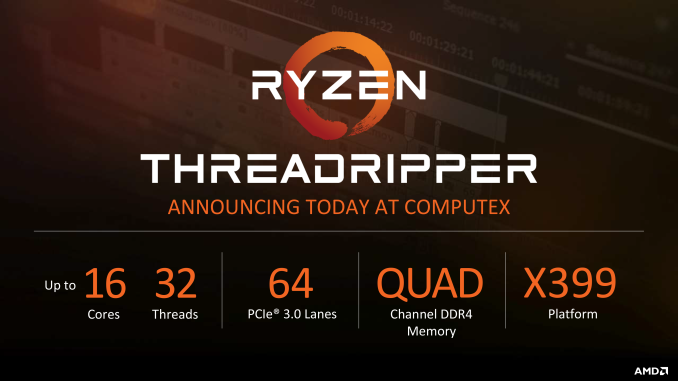
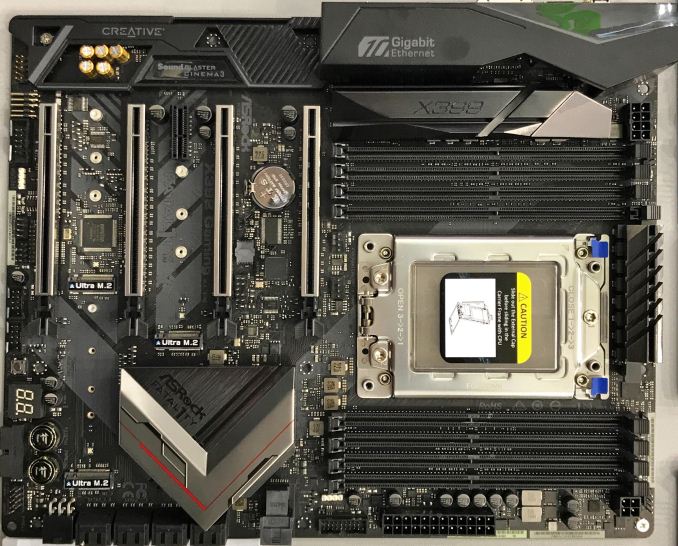
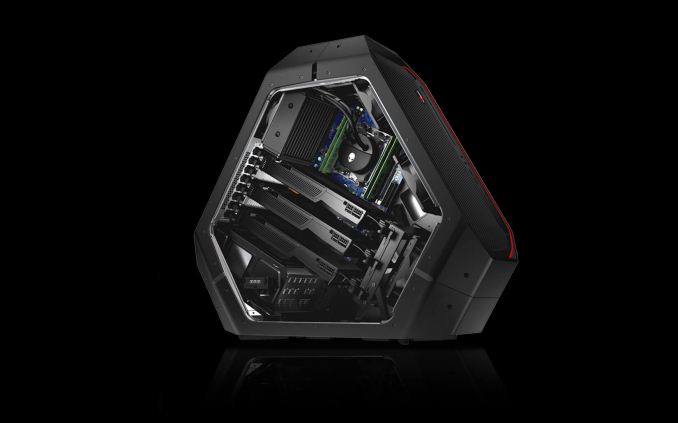
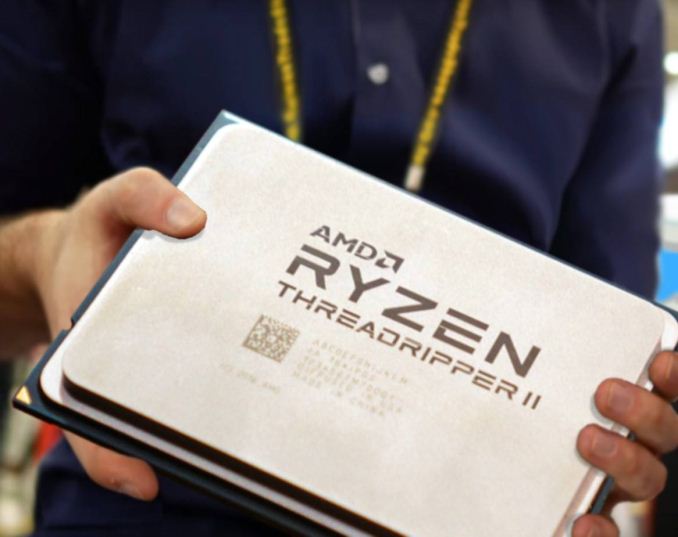








223 Comments
View All Comments
MajGenRelativity - Thursday, July 13, 2017 - link
I can fairly confidently say most gamers would not know what DRM is, let alone how to get around it.fanofanand - Thursday, July 13, 2017 - link
Your perception may be slanted, those of us who were gamers ten years ago definitely remember Bioshock and other games with such heavy DRM that it was installing root-kits into people's PCs. DRM isn't heavy-handed anymore BECAUSE of the backlash. I am anti-pirate but also anti-malware from software companies.desolation0 - Thursday, July 13, 2017 - link
I'll have to side with the major general on this one. Most gamers right now are mobile and console, despite growth in the PC gaming market. Even if we cut down to just PC gamers, most don't bother checking forums or gaming news more than occasionally. Many don't play games outside of a few favored series. Most gamers only notice about DRM when it happens in their game and causes problems for them. When their only encounter with DRM is Steam itself, most folks aren't too bothered by it just being a slow to start launcher. It's not that DRM isn't worse for them than the alternative, it's just not their priority and the push back is done by folks who care much more about it than they do. The more successful the vocal side is at keeping DRM out of their games, the less reason they have to join the vocal side.lmcd - Thursday, July 13, 2017 - link
There's a lot of games on steam that don't enable its copy protection, and steam is often just a convenient update + sync client for things obtained via GOG or Humble Bundles/Humble StoreCooe - Friday, July 14, 2017 - link
Yup, almost entirely laptops (with some old desktops as well), and heavily weighted by users in developing countries like Brazil and India with older models. The Steam survey is a terrible representation of just the North American desktop PC market.Santoval - Friday, July 14, 2017 - link
It's kind of a chicken and egg thing. Game developers will not use more than 4 cores because PC gamers rarely buy CPUs with more than 4 cores, and PC gamers rarely buy CPUs with more than 4 cores because games do not use more than 4 cores. I thought that the adoption of 8-core consoles of the last 1.5 generations would have broken that circle, but it did not. Both main consoles are x86 based, so their ports to games are relatively straightforward. Does this mean that even console games do not use more than 4 cores (maybe because their PC ports will waste them?) or they do and developers downgrade that support when making the PC ports? What about console exclusive games?Santoval - Friday, July 14, 2017 - link
edit: "..so their ports to *PCs*.."Krysto - Thursday, July 13, 2017 - link
8-core/16-threads should be the MINIMUM in all new game development right now. No excuses.MajGenRelativity - Thursday, July 13, 2017 - link
I think that's a bit excessive. I don't see 8 cores picking up into even most gaming oriented builds. 6 cores is still more reasonable, and is easier to achieve than 8 cores.OceanJP - Thursday, July 13, 2017 - link
I'm not sure whether you mean this is the minimum game developers should be using for their workstations or whether you mean 8 cores is the target they should optimize their games for. If you meant the latter: no excuse? How's this for an excuse?"It's wasteful to go out of my way optimizing my software for the benefit of an extremely tiny subset of my target audience".
Seriously, look at the latest steam survey: http://store.steampowered.com/hwsurvey/cpus/
The number of people running 8 or more cores is literally sub-1%. And mind you this survey is inherently skewed towards higher-end-than-average users (gamers on steam who know enough about their computers to report their specs). For reference into how skewed to the high end this is, the most popular GPU in the survey is the GTX 1060.